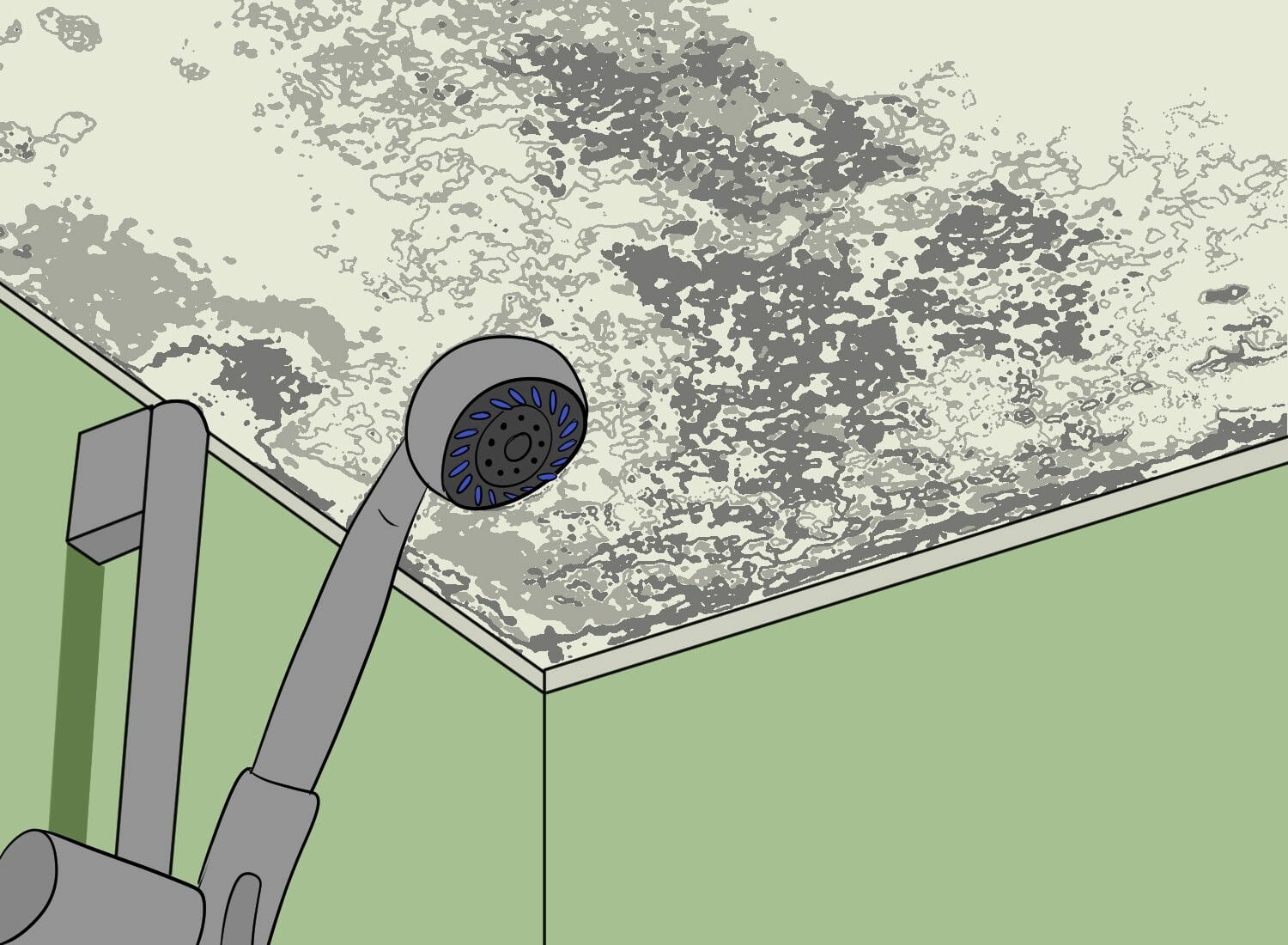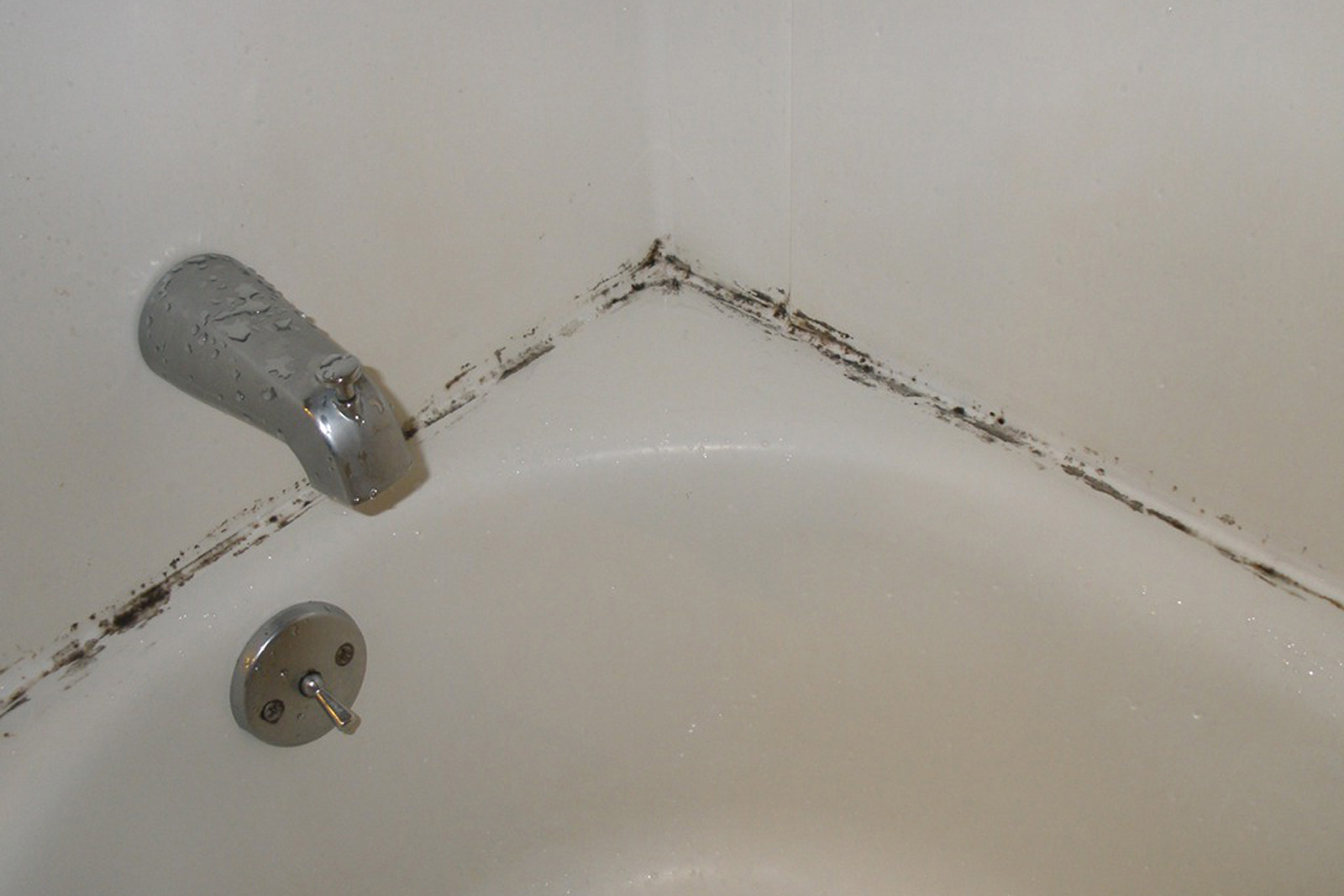Identifying Black Mold

Black mold, also known as Stachybotrys chartarum, is a type of fungus that can grow in damp, humid environments. It’s often black or dark green in color and can cause health problems, especially for people with respiratory issues or allergies. While it’s often confused with other types of mildew, black mold has distinct characteristics that set it apart.
Distinguishing Black Mold from Mildew
Black mold differs from mildew in several ways.
- Color: Black mold is typically black or dark green, while mildew can be white, gray, or even pink.
- Texture: Black mold has a slimy, velvety texture, while mildew is more powdery or fuzzy.
- Smell: Black mold has a musty, earthy odor, while mildew often smells like wet cardboard.
- Growth: Black mold grows in colonies and can spread quickly, while mildew is more localized.
These characteristics help differentiate black mold from other types of fungi, making accurate identification crucial for effective removal and prevention.
Common Locations of Black Mold in Bathrooms, What to do with black mold in bathroom
Bathrooms are prime breeding grounds for black mold due to their high humidity and moisture levels. Several areas in bathrooms are particularly susceptible to mold growth.
- Shower Stalls: The constant exposure to steam and water creates an ideal environment for mold to thrive. Areas around shower heads, grout lines, and the base of the shower stall are particularly prone to mold growth.
- Grout: Grout lines between bathroom tiles are often neglected and can trap moisture, leading to mold growth. The porous nature of grout allows mold spores to penetrate and grow.
- Ceilings: Bathroom ceilings are susceptible to leaks, condensation, and poor ventilation, creating conditions conducive to mold growth. The dark, damp areas behind bathroom fixtures are also vulnerable.
Inspecting for Black Mold
Thorough inspection is essential for identifying and addressing black mold in bathrooms.
- Visual Inspection: Carefully examine all areas of the bathroom, focusing on the locations mentioned above. Look for black or dark green patches with a slimy or velvety texture.
- Black Light: Black lights can help detect mold that may not be visible under regular lighting. Mold spores fluoresce under UV light, making them easier to spot.
Regular inspections and prompt action can prevent mold from spreading and ensure a healthy bathroom environment.
Removing Black Mold

Black mold can pose serious health risks, making its removal crucial. Exposure to black mold can trigger allergic reactions, respiratory problems, and even more severe health issues. It’s essential to address black mold infestations promptly and thoroughly to protect your health and well-being.
Methods for Removing Black Mold
Several methods can be employed to remove black mold, each with its own advantages and disadvantages. Choosing the appropriate method depends on the severity of the infestation, the size of the affected area, and your comfort level with DIY projects.
Scrubbing with Bleach Solutions
Scrubbing with bleach solutions is a common and effective method for removing black mold from small areas. Bleach is a potent disinfectant that can kill mold spores and prevent their regrowth.
- Gather your supplies: You will need a cleaning solution containing bleach, a scrub brush, a spray bottle, a bucket, rubber gloves, and a face mask.
- Prepare the area: Ensure proper ventilation by opening windows and doors. Wear protective gear, including rubber gloves and a face mask, to prevent skin and respiratory irritation.
- Mix the bleach solution: Mix one part bleach with ten parts water in a bucket. Never mix bleach with ammonia, as it creates toxic fumes.
- Apply the solution: Spray the bleach solution onto the affected area, ensuring it is thoroughly covered.
- Scrub the area: Use a scrub brush to remove the mold and any visible spores.
- Rinse the area: Rinse the area thoroughly with clean water to remove any remaining bleach solution.
- Dry the area: Allow the area to dry completely, preferably with a fan or dehumidifier.
Note: Always follow the manufacturer’s instructions for using bleach safely. Bleach can damage certain surfaces, so it’s crucial to test it in an inconspicuous area first.
Using a Mold-Killing Spray
Mold-killing sprays offer a convenient alternative to bleach solutions. These sprays contain fungicides that kill mold spores and prevent their growth.
- Select a mold-killing spray: Choose a spray specifically designed for killing mold and mildew.
- Prepare the area: Ensure proper ventilation by opening windows and doors. Wear protective gear, including rubber gloves and a face mask, to prevent skin and respiratory irritation.
- Apply the spray: Spray the mold-killing solution onto the affected area, ensuring it is thoroughly covered.
- Allow it to dry: Allow the spray to dry completely according to the manufacturer’s instructions.
- Repeat if necessary: If the mold reappears, repeat the application process.
Note: Mold-killing sprays may not be effective on all types of mold, and some may contain harsh chemicals. Always read the label carefully and follow the manufacturer’s instructions.
Professional Mold Remediation Services
For severe mold infestations or when dealing with large areas, professional mold remediation services are recommended. Professional mold remediation specialists have the expertise, equipment, and experience to remove mold safely and effectively.
- Contact a reputable mold remediation company: Research and choose a company with a proven track record and positive reviews.
- Schedule an inspection: Allow the professional to inspect the affected area and determine the extent of the infestation.
- Discuss the remediation plan: Discuss the remediation plan with the professional, including the methods they will use, the estimated cost, and the timeline.
- Obtain a written estimate: Ensure you receive a detailed written estimate outlining the scope of work, the materials used, and the total cost.
- Review the contract: Carefully review the contract before signing it, ensuring you understand the terms and conditions.
Note: Professional mold remediation services can be expensive, but they offer the best chance of eliminating the mold and preventing future infestations.
Preventing Black Mold Growth: What To Do With Black Mold In Bathroom

Bathrooms are prone to black mold growth due to their inherent moisture and humidity. Understanding the causes and implementing preventative measures can significantly reduce the risk of mold infestations. This section will explore the common causes of black mold growth in bathrooms and provide a comprehensive checklist of preventative measures homeowners can implement.
Understanding the Causes of Black Mold Growth
Mold thrives in damp environments, making bathrooms particularly susceptible. The primary culprits include:
- Moisture: Leaky faucets, showerheads, and pipes contribute significantly to excess moisture, creating an ideal breeding ground for mold.
- Humidity: Showers, baths, and even everyday activities like washing hands generate humidity. Poor ventilation traps this moisture, leading to mold growth.
- Poor Ventilation: Insufficient or inadequate ventilation prevents moisture from escaping, allowing it to condense on surfaces and promote mold growth.
Preventing Black Mold Growth: A Checklist
A proactive approach to bathroom maintenance is essential for preventing black mold growth. Here’s a checklist of preventative measures:
- Ensure Proper Ventilation:
– Install exhaust fans in your bathroom and ensure they are functional and adequately sized for your bathroom’s dimensions.
– Run the exhaust fan during and after showers and baths to remove moisture from the air.
– Open windows when possible to provide additional ventilation. - Maintain a Dry Bathroom Environment:
– Wipe down shower walls and floors after each use to remove excess moisture.
– Clean up spills promptly to prevent water from lingering on surfaces.
– Repair leaky faucets, showerheads, and pipes immediately to prevent water damage. - Use Mold-Resistant Materials:
– Choose mold-resistant materials for bathroom fixtures, flooring, and walls.
– Consider using tile, grout, and sealant products designed to resist mold growth.
Cleaning and Maintaining Bathroom Surfaces
Regular cleaning and maintenance are crucial for preventing mold growth. Here’s a detailed guide for different bathroom areas:
Shower Stalls
- Clean Regularly: Shower stalls should be cleaned at least once a week, or more frequently if necessary.
- Use a Mold-Killing Cleaner: Use a mold-killing cleaner specifically designed for bathroom surfaces. Apply the cleaner to all surfaces, including walls, floors, and showerheads.
- Rinse Thoroughly: Rinse all surfaces thoroughly with clean water to remove any residue from the cleaner.
- Dry Thoroughly: Dry the shower stall completely with a clean towel or squeegee to prevent moisture from lingering.
Grout
- Clean Regularly: Clean grout regularly using a grout cleaner and a stiff-bristled brush.
- Seal Grout: Seal grout with a sealant specifically designed for bathrooms to prevent moisture from penetrating and promoting mold growth.
Other Areas
- Clean Mirrors and Windows: Clean mirrors and windows regularly to prevent moisture from accumulating on the surface.
- Clean Towels and Rugs: Wash towels and rugs regularly to prevent the accumulation of moisture and mold.
What to do with black mold in bathroom – Yo, black mold in the bathroom is a total buzzkill. But hey, at least you can make it look fly with a new vanity. Check out this 42 inch black bathroom vanity , it’ll totally upgrade your space.
And remember, once you get rid of that mold, make sure you keep the bathroom well-ventilated to keep it from coming back, ya feel me?
Yo, black mold in the bathroom is a total buzzkill, man. It’s like, ew, gross. But if you’re gonna go for that sleek, modern look, you gotta think about the long game. A modern black marble bathroom is fire, but make sure you’re on top of that mold situation, you know?
Otherwise, you’ll be scrubbing more than just the shower floor.
